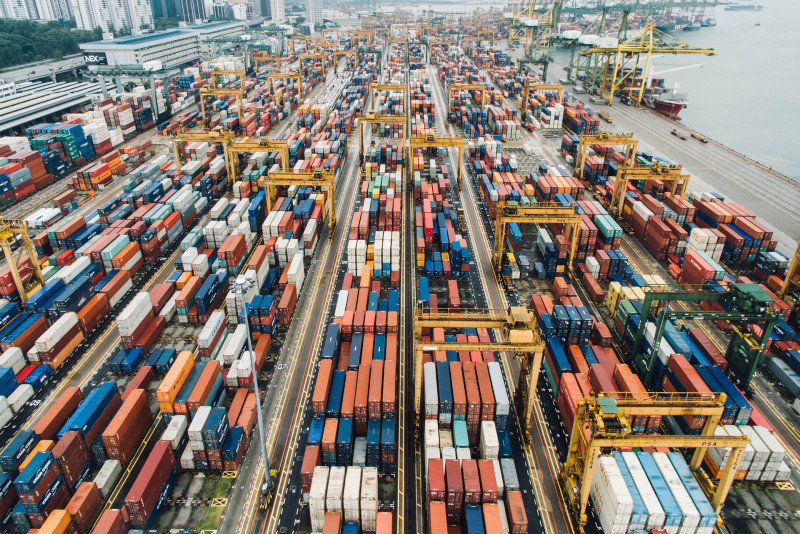By Staff Reporter
ABOARD AIR FORCE ONE/BEIJING/LONDON, April 11 (Reuters) – Beijing increased its tariffs on U.S. imports to 125% on Friday, hitting back against President Donald Trump’s decision to raise duties on Chinese goods and increasing the stakes in a trade war that threatens to upend global supply chains.
The retaliation intensified global economic turmoil unleashed by Trump’s tariffs. U.S. stocks ended a volatile week higher, but the safe haven of gold hit a record high during the session and benchmark U.S. 10-year government bond yields posted their biggest weekly increase since 2001 alongside a slump in the dollar, signaling a lack of confidence in America Inc.
The Reuters Tariff Watch newsletter is your daily guide to the latest global trade and tariff news. Sign up here.
One U.S. survey of consumers showed inflation fears have mounted to their highest since 1981, while financial institutions have been forecasting an ever greater risk of recession.
Trump downplayed the market turbulence, predicting the dollar would strengthen and saying his 10% across-the-board tariffs represented a floor in most cases as countries strike their own trade deals with Washington.
“When people understand what we’re doing, I think the dollar will go way up,” he told reporters aboard Air Force One late on Friday. “The bond market’s going good. It had a little moment but I solved that problem very quickly.”
The $29 trillion Treasury market saw an acute selloff following Trump’s initial announcement about what he calls reciprocal tariffs. That turbulence was seen as part of what drove Trump to announce a 90-day pause for countries other than China on Wednesday.
The White House has said since then that more than 75 countries have sought trade negotiations with the United States and that future deals would bring certainty.
India and Japan are among the powers to have advanced toward trade talks, but generally foreign leaders have puzzled over how to respond to the biggest disruption to the world trade order in decades.
The tit-for-tat tariff increases by the U.S. and China stand to make goods trade between the world’s two largest economies impossible, analysts say. That commerce was worth more than $650 billion in 2024.
“We pretty much can do what we want to do, but we want to be fair. We can set the tariff and they can choose not to deal with us or they can choose to pay it,” Trump said on Air Force One, repeating his contention that U.S.-imposed tariffs are paid by foreign exporters.
Although such levies can inflict pain on the exporter by making its products less competitive, tariffs are paid by the importer, which often passes the additional cost on to the consumer.
Trump, who said on Friday he was comfortable with the tariffs on China, has suggested that a deal with Beijing could be in the offing, too, heaping praise on President Xi Jinping despite their differences over trade. But there were no signs that the world’s two largest economies were ready to back down.
“The president made it very clear: When the United States is punched, he will punch back harder,” White House Press Secretary Karoline Leavitt told reporters on Friday.
The market responded by punishing both the dollar and bond prices.
Benchmark 10-year U.S. Treasury yields, which move opposite to price, registered their biggest weekly rise in more than two decades, with trading volumes well above average, amid fears that China may be offloading a large portion of its U.S. bond holdings.
A second day of data on U.S. inflation showed price pressures were not yet building broadly across the U.S. economy, although the Producer Price Index for March did show industrial metals prices rising due to import levies on things like steel and aluminum, in place for a month now.
“Tarifflation will be much more important for the outlook than backward-looking data,” said Bill Adams, chief economist at Comerica Bank. “If tariffs stay in place they will push inflation considerably higher in coming months.”
The University of Michigan said its Consumer Sentiment Index dropped to 50.8 this month from 57.0 in March. Economists polled by Reuters had forecast the index falling to 54.5.
In a reversal of previous surveys, the latest one also showed weakening confidence among Trump’s fellow Republicans.
Measures consumer sentiment by party identification
Measures consumer sentiment by party identification
Consumers’ 12-month inflation expectations soared to 6.7% this month, the highest since 1981, from 5.0% in March, according to the survey.
TRADE WAR WITH CHINA
This week, Trump announced his reprieve for levies on dozens of countries while ratcheting up tariffs on Chinese imports effectively to 145%.
China retaliated with more tariffs on Friday. China’s finance ministry called Trump’s tariffs “completely unilateral bullying and coercion.”
Beijing indicated this would be the last time it matched U.S. tariff rises but left the door open for other types of retaliation.
“If the U.S. truly wants to have talks, it should stop its capricious and destructive behavior,” Liu Pengyu, spokesperson for the Chinese embassy in the U.S., wrote on social media. “China will never bow to maximum pressure of the U.S.”
UBS analysts in a note called China’s declaration “an acknowledgement that trade between the two countries has essentially been completely severed.”
Leavitt, in turn, delivered a warning to Beijing: “If China continues to retaliate, it’s not good for China.”
On Thursday, Trump told reporters he thought the U.S. could make a deal with China. On Friday, Xi made his first public remarks on Trump’s tariffs, telling Spanish Prime Minister Pedro Sanchez in Beijing that China and the European Union should “jointly oppose unilateral acts of bullying.”
A table showing sectors of imported products and the corresponding estimated price increases that could result from Trump’s sweeping tariffs, ranging from 10% for medical diagnostic equipment to 30% for computer parts and toys & video games.
A table showing sectors of imported products and the corresponding estimated price increases that could result from Trump’s sweeping tariffs, ranging from 10% for medical diagnostic equipment to 30% for computer parts and toys & video games.
Reporting by Jeff Mason on Air Force One, Nandita Bose in Washington, Joe Cash in Beijing, and Karin Strohecker in London; Writing by James Oliphant and Daniel Trotta; Editing by Lincoln Feast, Toby Chopra, Franklin Paul, David Gregorio and Chizu Nomiyama


